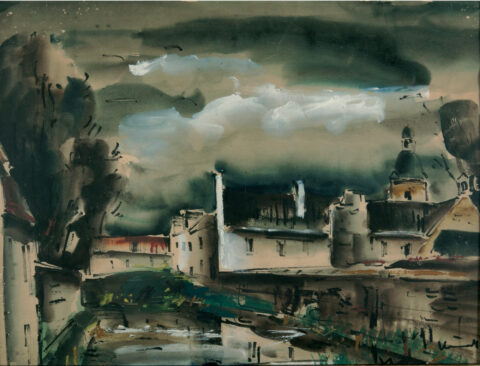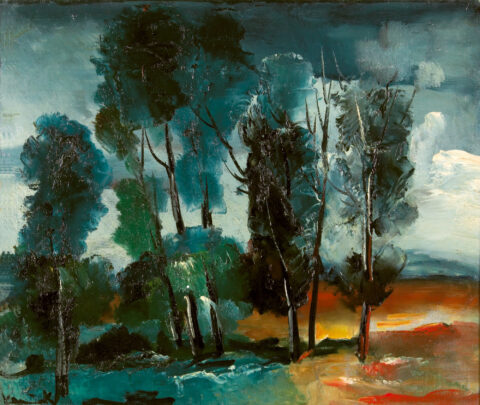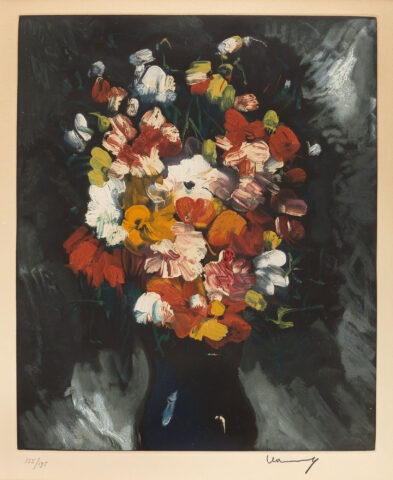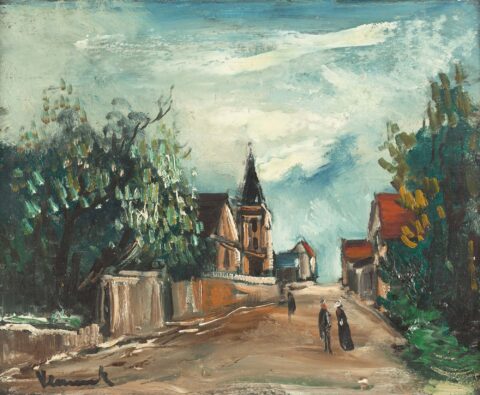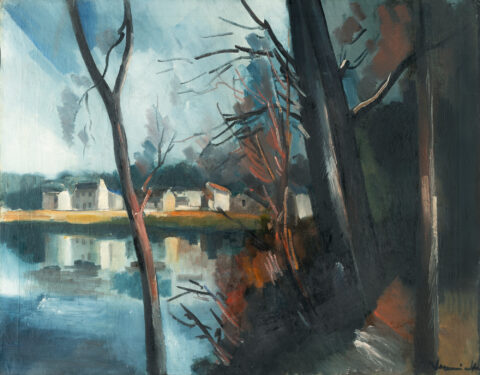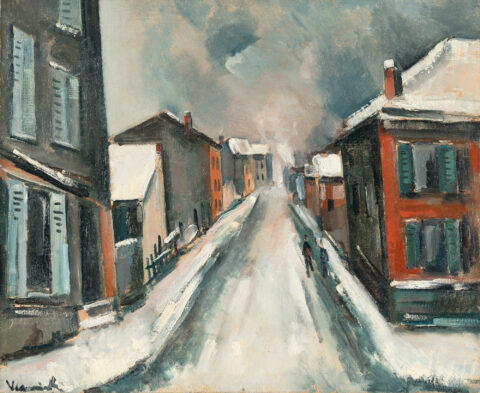Maurice de Vlaminck
Maurice de Vlaminck was born in Paris in 1876, the son of a musicians. In his youth he had painting lessons, but at first he became a musician and competed in semi-professional bicycle races. It was not until a chance meeting with André Derain in the summer of 1900 that he decided to become a painter. Together they shared a studio. In 1901, Vlaminck saw works by Van Gogh at an exhibition in the Bernheim-Jeune Gallery, which strongly influenced him as an autodidact. Together with Derain and Henri Matisse, Vlaminck is considered the founder and main representative of Fauvism. They presented their strongly coloured works for the first time in 1905 at the Paris Salon d’Automne, where critics disparagingly called them “fauves” (“savages”). Vlaminck’s first solo exhibition took place a year later in 1906 at the Ambroise Vollard, who bought Vlaminck’s works and represented him from then on. After the colour-intensive, wild early period of the Fauves, Vlaminck found a new role model in the Post-Impressionist Cézanne in 1907 and increasingly turned away from Fauvism in 1908. In 1912, Vlaminck’s works were shown at the exhibition of the “Blaue Reiter” in Munich, the Berlin gallery Der Sturm as well as at the Sonderbund exhibition in Cologne, and the following year at the New York “Armory Show”. In 1913 Kahnweiler took over Vlaminck’s exclusive gallery representation. After the First World War, Vlaminck achieved his final breakthrough with an exhibition at the Galerie Eugène Druet in 1919. Exhibitions with Alfred Flechtheim in Düsseldorf followed, and in 1922 his first solo exhibition in New York. He developed an individual, expressive landscape style with a reduced, sombre choice of colours and strong contrasts of light and dark. In 1925 Vlaminck moved to Reuil-la-Gadelière northwest of Chartres. Landscapes without a staffage of people and with quickly executed, broad brushstrokes became his main motif. In 1941 Vlaminck and Derain took part with other French artists in a two-week art trip to Germany organised by the sculptor Arno Breker with the National Socialists. After the liberation of France in 1944, Vlaminck is therefore briefly arrested on charges of collaboration. In 1955, Vlaminck’s works were represented at documenta I in Kassel, and in the same year the artist became a member of the Académie Royale de Belgique. The Galerie Charpentier in Paris held a retrospective on his 80th birthday in 1956. In addition to painting, Vlaminck was active in literature and wrote critiques, novels, poems and several autobiographies. Vlaminck died in Reuil-la-Gadelière in 1958.


